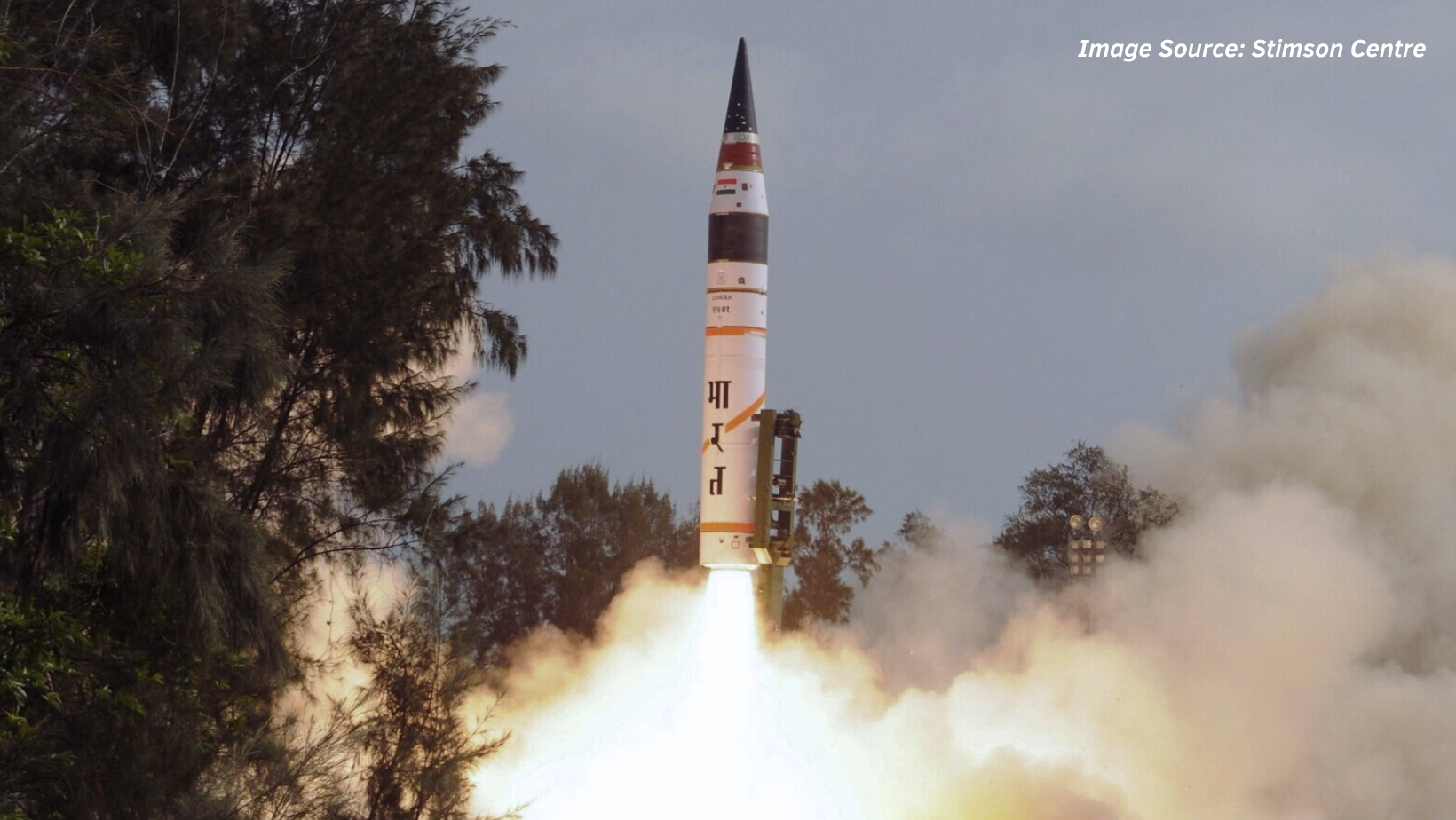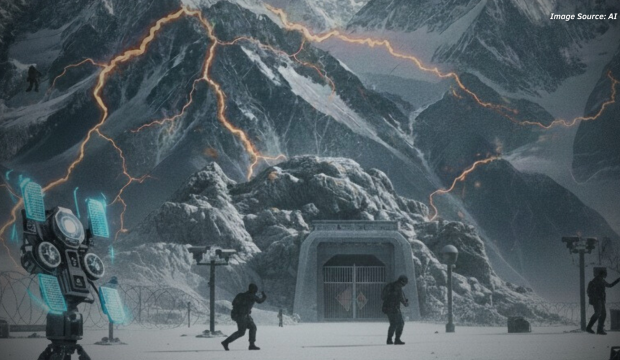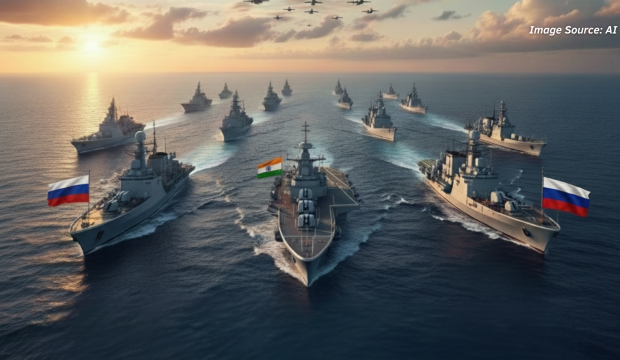Introduction
The world has seen peace for almost eight decades now. Some give credit to mature interconnected relations among countries while some say it is because of nuclear weapons. While we cannot certainly say why there is no third world war yet, nuclear weapons certainly deserve some credit for that. Nina Tannenwald called it a “Nuclear Taboo[1]”, where no world leader wants to be associated with the destruction and killings of millions of civilians by launching a nuclear strike. While other analysts claim that it is because of Mutual Assured Destruction (MAD)[2] that leaders avoid escalating the war through nuclear weapons.
A lot has changed since the only time nuclear weapons were used in World War 2 in Japan. While the yield of nuclear weapons used on Hiroshima and Nagasaki was between 10 to 20 kilotons, now countries possess weapons having a destructive yield of 100 kilotons to a few megatons. But what is interesting and more complex in addition to MAD is the emergence of the Tactical Nuclear Weapons[3].
A tactical nuclear weapon is a type of nuclear armament specifically intended for use on the battlefield in military operations. These weapons are designed to be deployed in conjunction with conventional forces during combat[4].
During the Cold War, tactical nuclear weapons made up a significant portion of nuclear arsenals. However, following the Cold War, the NATO and Russian stockpiles of these weapons were significantly reduced, while the focus shifted to increasing long-range ballistic missile capabilities. Both the United States and the former Soviet Union had deployed these weapons in Europe, among other locations, during the Cold War era[5].
The possibility of the use of Tactical Nuclear Weapons in future conflicts in South Asia makes it more challenging for India to strategise its planning for any future war against Pakistan and China [6].
China Challenge
When India tested its nuclear weapons in May 1998, it reasoned it as a development of deterrent capability against China which was a nuclear state since 1964. However, China does not believe in this story that India developed its nuclear weapons in response to China. It thinks it was also India’s aspiration to become a great power that was not possible without acquiring nuclear weapons as the major motivation[7].
The great power competition of China with the United States of America is pushing China to acquire more and more nuclear weapons, especially tactical nuclear weapons to balance the hegemony of the United States of America in the domain[8]. According to the Stockholm International Peace Research Institute (SIPRI), as of 2024, china has a military stockpile of 500 warheads, while 24 are deployed[9]. Hans M. Kristensen, associate senior fellow with SIPRI’s weapons of mass destruction programme and director of the nuclear information project at the Federation of American Scientists (FAS) said “China is expanding its nuclear arsenal faster than any other country[10]”.
China’s rapid expansion of its nuclear arsenal and its efforts to assert dominance in South Asia and the South China Sea significantly heighten the risk of escalation in the region[11]. This situation also exerts pressure on India, which is already contending with border tensions with China.
Aggressive Pakistan
Pakistan has implemented a “full spectrum deterrence” strategy[12], which permits the use of nuclear weapons in response to even low-scale conventional warfare, significantly below the typical nuclear threshold. This approach reflects Pakistan’s intent to maintain a broad and flexible nuclear posture[13].
As part of this strategy, Islamabad has developed tactical or battlefield nuclear weapons, such as the Hatf IX Nasr missile, which has a short range of 60 kilometres[14]. These weapons are designed to provide a quick, localized nuclear response in a conflict scenario.
Additionally, Pakistan has expanded its arsenal with various ground- and air-launched nuclear-capable cruise missiles, with ranges between 350 and 700 kilometres[15]. In 2017, following India’s commissioning of a nuclear submarine, Pakistan introduced its Babur-3 nuclear-capable sea-based cruise missile, further enhancing its strategic deterrence capabilities[16].
The ongoing infiltration of terrorists into Jammu and Kashmir, allegedly supported by the Pakistani military and ISI, combined with India’s robust responses, such as the Uri surgical strike and the Pulwama airstrike, could potentially escalate tensions.
In such a scenario, Pakistan might perceive a significant threat from India and fear an impending attack, this creates instability in the region. As Pakistan does not have a “no first use” nuclear doctrine, it increases the chances of miscalculations, especially if it anticipates a potential defeat. While there is substantial scope of conventional conflict below the nuclear threshold, Indian planners must look at Pakistan using its nuclear card at some stage.
India’s Options
India’s nuclear doctrine rests on three key principles: a “no first use” policy, maintaining a credible minimum deterrent, and ensuring civilian control over nuclear weapons[17]. According to this policy, India will only resort to using nuclear weapons in response to a nuclear attack on the country, its territories, or its armed forces. The retaliation will be overwhelming and intended to cause unacceptable harm.
India’s approach to nuclear defence, which emphasizes an overwhelming retaliation designed to inflict massive destruction on the enemy, renders the need for investment in tactical nuclear weapons unnecessary. Instead of focusing on smaller, battlefield-specific nuclear arms, India prioritizes the use of strategic nuclear weapons, which are intended to deliver a devastating blow in response to any nuclear aggression.
This strategy reflects the belief that maintaining a credible and powerful deterrent through strategic nuclear capabilities is sufficient to ensure national security, without the additional complexity and risks associated with deploying tactical nuclear weapons.
India holds the view that the political and psychological atmosphere likely to exist during the use of nuclear weapons — particularly in a tit-for-tat scenario — would be too volatile to allow for moderation or the possibility of strategic dialogue through controlled nuclear exchanges[18]. The intensity of the situation, marked by extreme tension and high stakes, would make it difficult to maintain any level of restraint.
Moreover, India believes that such ideas of controlled nuclear engagement overlook the harsh political and military realities that would shape decision-making in an environment characterized by deep distrust, pervasive danger, uncertainty, and overwhelming fear[19]. In such a charged atmosphere, the pressures on leaders would likely push them towards more aggressive actions, leaving little room for measured responses or negotiations.
Conclusion
The nuclear rivalry in South Asia, often seen as a trilateral competition between India, China, and Pakistan, is, in reality, a four-sided race involving the USA and its allies along with China-Pakistan, and India[20]. China aims to counterbalance U.S. influence in South Asia and the South China Sea – especially after the signing of AUKUS- while India strives to keep up. Pakistan’s pursuit of Tactical Nuclear Weapons is an effort to maintain a strategic advantage over India. While many analysts argue that India need not invest in tactical nuclear weapons due to its existing nuclear policy, which explicitly states the use of strategic nuclear weapons in response to any nuclear attack, others advocate for a policy shift. They suggest moving from the doctrine of “massive retaliation for unacceptable damage” to K. Subrahmanyam’s concept of “punitive deterrence[21].” This shift would offer India greater strategic flexibility and more nuanced options to counter the threat posed by tactical nuclear weapons[22].
DISCLAIMER
The paper is author’s individual scholastic articulation and does not necessarily reflect the views of CENJOWS. The author certifies that the article is original in content, unpublished and it has not been submitted for publication/ web upload elsewhere and that the facts and figures quoted are duly referenced, as needed and are believed to be correct.
References
- Nina Tannenwald, “The Nuclear Taboo: The United States and the Normative Basis of Nuclear Non-Use”, International Organisation, Vol. 53, No. 3(Summer, 1999), pp. 433-468.
- Richard R. Muller, “The Origins of MAD: A Short History of City-Busting”, in Getting MAD: Nuclear Mutual Assured Destruction, Its Origins and Practice ed Henry D. Sokolski, (New York: Strategic Studies Institute, 2004), 13-15.
- Explainer, “What are Tactical Nuclear Weapons?”, Union of Concerned Scientists, Accessed on 24/08/2024. https://www.ucsusa.org/resources/tactical-nuclear-weapons
- Air Commodore Rippon Gupta, “Tactical Nuclear Weapons: Myths and Realities”, United Services Institution of India, Accessed on 10/08/2024. https://www.usiofindia.org/publication-journal/tactical-nuclear-weapons-myths-and-realities.html
- “US-Russia Nuclear Arms Control (1949-2021), Council on Foreign Relations, Accessed on 28/08/2024. https://www.cfr.org/timeline/us-russia-nuclear-arms-control
- Stephen Philip Cohen, “Nuclear Weapons and Nuclear War in South Asia: An unknowable future”, Brookings, Accessed on 21/08/2024. chrome-extension://efaidnbmnnnibpcajpcglclefindmkaj/https://www.brookings.edu/wp-content/uploads/2016/06/cohens20020501.pdf
- Xiaoping Yang, “China’s Perceptions of India as a Nuclear Weapons Power”, Carnegie – Endowment for International Peace, Accessed on 11/08/2024. https://carnegieendowment.org/research/2016/06/chinas-perceptions-of-india-as-a-nuclear-weapons-power?lang=en
- Kelsey Davenport, “Nuclear weapons: who has what at a glance”, Arms Control Association, Accessed on 13/08/2024. https://www.armscontrol.org/factsheets/nuclear-weapons-who-has-what-glance#:~:text=The%20United%20States%2C%20Russia%2C%20and,subject%20to%20any%20treaty%20limits.
- F P Explainers, “India’s nuclear weapon arsenal has grown, but how does it compare to Pakistan, china?”, Firstpost, Accessed on 14/08/2024. https://www.firstpost.com/explainers/india-nuclear-weapon-arsenal-compare-to-pakistan-china-13783509.html
- Ibid.
- Ashley J. Tellis; Tong Zhao, “What are China’s Nuclear Weapons for?”, Foreign Affairs, Accessed on 09/08/2024. https://www.foreignaffairs.com/responses/what-are-chinas-nuclear-weapons
- Kartik Bommakanti, “Pakistan’s latest nuclear antics in the form of full spectrum deterrence”, ORF, Accessed on 17/08/2024. https://www.orfonline.org/expert-speak/pakistans-latest-nuclear-antics-in-the-form-of-full-spectrum-deterrence
- Debak Das, “The state of nuclear instability in South Asia: India, Pakistan, and China”, LawFare, Accessed on 10/08/2024. https://www.lawfaremedia.org/article/the-state-of-nuclear-instability-in-south-asia-india-pakistan-and-china#:~:text=A%20greater%20number%20of%20tactical,response%20to%20a%20terror%20attack.
- Mansoor Ahmed, “Pakistan’s Tactical Nuclear Weapons and their impact on Stability”, Carnegie: endowment for international peace, Accessed on 15/08/2024. https://carnegieendowment.org/research/2016/06/pakistans-tactical-nuclear-weapons-and-their-impact-on-stability?lang=en
- Ankit Panda, “Pakistan conducts second test of Babur-3 Nuclear Capable submarine-launched cruise missile”, The Diplomat, Accessed on 14/08/2024. https://thediplomat.com/2018/04/pakistan-conducts-second-test-of-babur-3-nuclear-capable-submarine-launched-cruise-missile/
- Ibid
- Rajesh Rajagopalan, “India’s Nuclear Policy”, NIDS, Accessed on 16/08/2024. chrome-extension://efaidnbmnnnibpcajpcglclefindmkaj/https://www.nids.mod.go.jp/english/event/symposium/pdf/2009/e_06.pdf
- Lt General Prakash Menon, “Should India make tactical nukes to counter China? Delhi’s no first use rule has no room for it”, The Print, Accessed on 15/08/2024. https://theprint.in/opinion/should-india-make-tactical-nukes-to-counter-china-delhis-no-first-use-rule-has-no-room-for-it/1494421/
- Ibid.
- Ibid 13.
- Rajesh Rajagopalan, “India’s Nuclear Doctrine Debate”, Carnegie Endowment, Accessed on 27/08/2024. https://carnegieendowment.org/research/2016/06/indias-nuclear-doctrine-debate?lang=en
- Ibid 18.














































